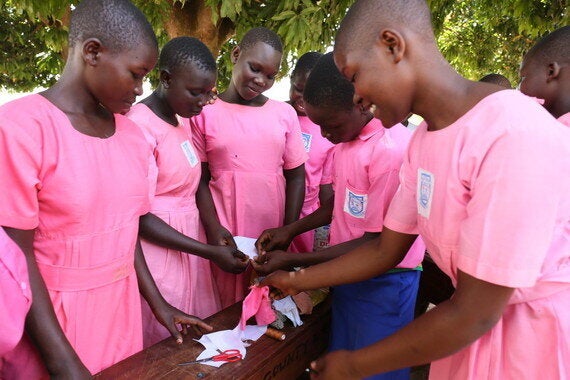Today, we are seeing the highest number of displaced people since the Second World War, and the threats to women and girls are numerous. Displacement, refugee camps, human trafficking, the loss of education, the lack of even basic healthcare, sexual exploitation and violence - the list seems endless, and insurmountable.
And post conflict, the list of issues facing women and girls will continue to grow. As part of the UK government's civil service team in Iraq, immediately after the fall of Saddam Hussein in 2003, I remember well the efforts to enshrine women's right to vote, to education, to good health, as we helped convene the first post-war conference in Baghdad on 'Women in Iraq'.
Entrenched in many of these issues is the human right to water and sanitation. It is just one factor in the difficulties that girls and women face, but it is an area in which progress is tangible and has knock-on effects, from health and education to gender rights and more.
Rights, health and dignity
WaterAid's participation in the 5,500-delegate-strong Women Deliver conference in Copenhagen this week has never been more important. As we approach the half-way point on Year 1 of the new UN Global Goals, now more than ever we need to consider the importance of water, sanitation and hygiene in discussions on the rights of women and girls, their health and their dignity.

The chairperson of the newly formed School Health Club at Kalampete Primary School, Uganda teaches the other club members how to make sanitary pads to help them manage their periods in school. WaterAid/James Kiyimba
Whether in refugee camps or in ensuring fast-growing countries in the developing world can handle their influx of new arrivals, water, sanitation and hygiene are key. We cannot fully meet the new Global Goals without them.
Ensuring access to safe water and well-kept latrines, as well as soap for handwashing, helps lessen the risk of diarrhoea and other illnesses. Safe, well-lit latrines with locks - whether in refugee camps or urban slums - can help reduce the vulnerability to violence that women and girls face when there is nowhere but a bush under cover of darkness to relieve themselves. Equipping schools with water and proper toilets means girls are more likely to stay and participate in their lessons during menstruation, and less likely to fall behind. And making sure health centres also have continuous access to safe water, private latrines and rigorous hygiene means better healthcare for all.
The world has made stunning strides since 2000 - lowering the rate of maternal and child mortality, improving immunization rates and reducing the number of people living in extreme poverty.
But the lack of life's basics threatens to limit these gains. How can we hope to further cut the rate of maternal mortality if the places where women give birth cannot be kept clean and sanitary, because there's no safe water or soap, or because the nearest latrines are fetid and overflowing? How can we help baby girls survive infancy if they are born into these conditions? How can we rid communities of diseases that spread in insanitary conditions, like cholera and polio, if children still have nowhere to relieve themselves but the dirty yards where they also play?
Girls face enough obstacles in attending and staying in school. A lack of safe water and toilets is just one - but one that can be addressed. Keeping them in school means they're less likely to marry young, less likely to have children before they themselves are women, more able to generate income or care for their families as adults, and more likely to raise their children to be educated themselves.
Water, sanitation and hygiene - as outlined in Goal 6 - are critical for universal health care, for advancing gender rights and for eradicating extreme poverty.
Bringing the issues to life at Women Deliver
At the fourth global conference of Women Deliver between 16-19 May, WaterAid will be talking about the importance of water, sanitation and hygiene in healthcare facilities for maternal and newborn health, and about how menstrual hygiene management is key to girls' health, education and rights. We have been lucky to draw upon the support of other organisations to amplify our calls to action. We'll be showing our work through film and reports, including our What Cost Water? report, about the tremendous cost of water for the world's poorest and an article calling for more action on menstrual hygiene management in schools from journal PLOS Medicine.
We'll bringing the issues to life for delegates at the conference itself with a clean-water lottery, a film showing the ultimate pregnancy test that tells mothers-to-be whether their baby will be born in a safe environment, our roaming giant poo and our jerry can-carrying challenge.
To reach everyone everywhere by 2030 with safe water, decent toilets and hygiene will require coordinated efforts from governments at all levels as well as from those working on education, health and human rights.
It's an ambitious goal - but the costs of failure will be even higher.
